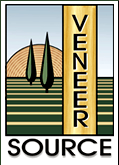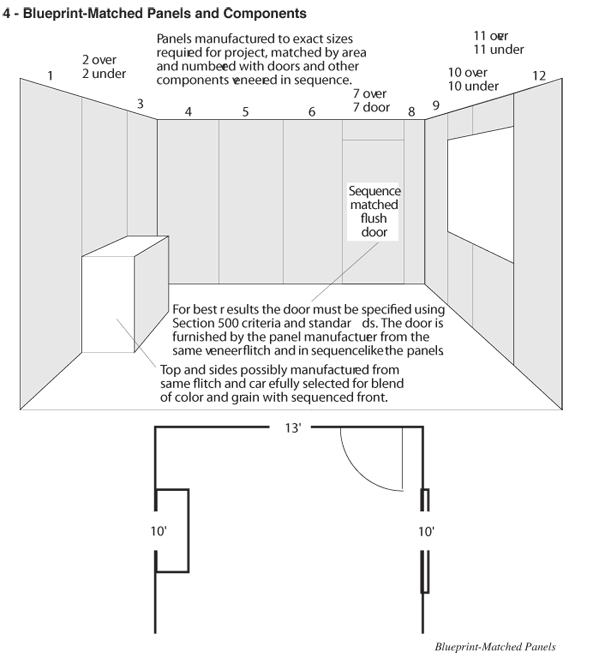







Veneered panels used in casework or paneling in the same area may be matched to each other. This important component of the project must be carefully detailed and specified. The natural growth patterns of the tree will cause the figure on the sequential panels to ascend, descend, or show a “grain progression” as the eye moves from panel to panel. These illustrations were developed in Imperial measure and have not been converted for this edition. The four common methods are:

This method of panel matching achieves maximum grain continuity since all panels, doors, and other veneered components are made to the exact sizes required and in the exact veneer sequence. If possible, flitches should be selected that will yield sufficient veneer to complete a prescribed area or room. If more than one flitch is needed, flitch transition should be accomplished at the least noticeable, predetermined location. This method requires careful site coordination and relatively long lead times. Panels cannot be manufactured until site conditions can be accurately measured and detailed. This panel matching method is more
expensive and expresses veneering in its most impressive manner.
1 - Pre-manufactured Sets - Full Width
2 - Pre-manufactured Sets - Selectively Reduced in Width
3 - Sequence-Matched Uniform Size Set
... that managed forests, thanks to their high proportion of young, strong, growing trees, enable CO2 to be extracted?
... that an old, unmanaged forest produces as much CO2 through processes of decomposition and decay as it stores, and that therefore an unmanaged forest contributes nothing to reducing global CO2?


Phone: 407-423-2252 • Fax: 407-423-1566 • sales@veneersource.com